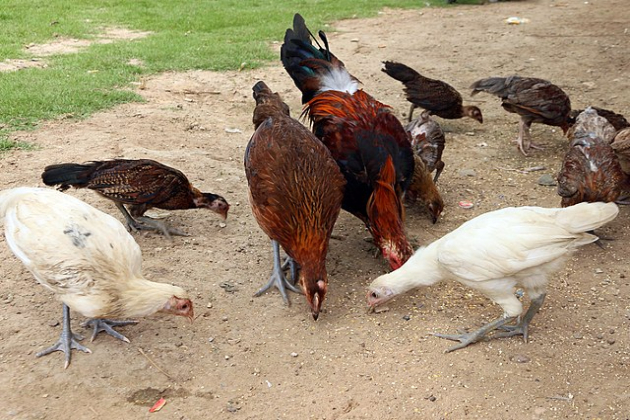Flu may be back, but COVID is far from over. How do they compare?
The Conversation
04 Jul 2022, 02:08 GMT+10

Since Australia's first Omicron wave after borders opened late last year, the pandemic has largely faded from the news and public perception. Gone are the daily briefings with updates on the numbers of cases, hospitalisations and deaths.
But this perception doesn't match reality. While hospitalisation and death rates have been relatively lower than earlier waves - thanks to the vaccination rollout and naturally acquired immunity - 95% of all Australia's COVID cases have occurred since the New Year. The daily rate of infections continues in the tens of thousands.
Almost 3,000 Australians died of COVID in the first quarter of 2022, placing it between coronary heart disease and stroke as a major cause of death.
This year we've seen both the Omicron wave and the re-emergence of influenza. After almost disappearing for two years of the pandemic, the lifting of most restrictions (such as social distancing and working from home), the decline in mask use and opening of international borders has allowed influenza to re-emerge.
So, how do COVID and seasonal influenza compare?
How deadly are COVID and influenza?
The case fatality rate - the proportion of COVID cases who die - has improved dramatically over the pandemic. In the 2020 Victorian June-October wave, around 3% of cases died.
In the 2021 Delta waves in New South Wales and Victoria, the death rate was under 1%.
For the Omicron wave this year - by which time most of the population were vaccinated - the case fatality rate has approached 0.1%. This is comparable to the seasonal influenza case fatality rate seen in "normal" flu years.
This drop in COVID case fatality rate has several causes: our high vaccination uptake, immunity from previous infection, better treatments, and Omicron being less deadly. The relative contributions are hard to tease out, but vaccination is likely to have played the most significant role.
The importance of COVID vaccination was underscored by a recent report estimating that internationally, vaccines have prevented between 14.4 and 19.8 million deaths. The impact would have been much greater with more equitable global distribution of vaccines.
Which is worse for unvaccinated people?
As of January, Omicron caused around one-third the rates of hospitalisation and death as the Delta variant. And for well-vaccinated people, this was comparable to influenza.
For unvaccinated people, Omicron was still worse than influenza.
But any comparison of COVID variants and influenza is complicated by new sub-variants, waning immunity, and the effects of vaccine booster doses.
How well do vaccines protect against COVID variants?
Although Omicron is less lethal than Delta, vaccination is also less effective, especially without a third or fourth dose.
The table below is compiled from weekly reports from the United Kingdom of vaccine effectiveness, mostly among those over 50 years of age. It shows vaccine effectiveness in preventing cases has declined with the Omicron variant.
But the effectiveness in preventing hospitalisations and deaths has remained high, particularly with boosters.
It's important to interpret the apparently lower protective effect of vaccination against hospitalisation and death during the Omicron wave with caution. Some patients in hospital were found incidentally to have a positive test for COVID, which did not contribute to their subsequent death. Vaccination could not have prevented that.
Which is more transmissible - COVID or the flu?
COVID has been far more infectious and spreads more rapidly than influenza.
The first Omicron variant was estimated to be 100% more transmissible than the original SARS-CoV-2 virus, and 37% more transmissible than Delta. Successive Omicron sub-variants have ever higher infectiousness - all far beyond that of influenza.
Seasonal influenza has a reproduction number of about 1.3 , compared with 4.2 for Omicron. That means one person with the flu spreads it to 1.3 other people, on average, while one person with Omicron passes it to 4.2 others. That sounds modest but these multiply, so three cycles of flu is 1.3 x 1.3 x 1.3 = 2.2 cases, whereas three cycles of Omicron is 4.2 x 4.2 x 4.2 = 74.
As a result, we have had nearly 100-fold more COVID than influenza cases this year, and COVID will likely remain the major cause of hospitalisations and deaths over winter.
One illustration of this is data from the United States: in January 2022, more US children died of COVID in a single month than in any of the ten previous years from influenza.
What are we likely to see in future?
Compared with many countries, Australia has done well in controlling COVID. It has minimised both the impact of illness and the economic burden, through international and state border closures, intermittent lockdowns in some states, and a very successful initial vaccine rollout.
But the COVID pandemic is not over, and we will experience further waves of infection with new sub-variants such as Omicron BA.4/5 (now 35% of cases in NSW), which will continue to cause illness, hospitalisation and death.
Unfortunately, Australia's booster uptake has been much slower than the initial vaccination campaign and has almost stalled. This complacency is dangerous.
In the past three years we have experienced the pandemic and a series of natural disasters in Australia. Fatigue and a desire to move past COVID is completely understandable but carries substantial risk.
During winter, we must redouble our efforts to maintain population immunity through vaccine boosters combined with reasonable protective measures. Make sure your COVID and influenza vaccines are up-to-date, avoid crowded places (or wear a mask if you can't), and avoid others if you have any respiratory symptoms.
Read more: COVID mask mandates might be largely gone but here are 5 reasons to keep wearing yours
Authors: Paul Glasziou - Professor of Medicine, Bond University | David Henry - Professor of Evidence-Based Practice, Institute for Evidence-Based Healthcare, Bond University 
 Share
Share
 Tweet
Tweet
 Share
Share
 Flip
Flip
 Email
Email
Watch latest videos
Subscribe and Follow
Get a daily dose of Australian Herald news through our daily email, its complimentary and keeps you fully up to date with world and business news as well.
News RELEASES
Publish news of your business, community or sports group, personnel appointments, major event and more by submitting a news release to Australian Herald.
More InformationInternational
SectionLawmakers push for fewer military flights in Washington D.C. area
WASHINGTON, D.C.: Ten Democratic lawmakers in the U.S. House of Representatives have asked the Pentagon to reduce military training...
Delta crash-landing probe finds dangerous descent before touchdown
TORONTO, Canada: An initial investigation into last month's dramatic Delta Air Lines crash-landing in Toronto has revealed that the...
New York court blocks law allowing over 800,000 non-citizens to vote
NEW YORK CITY, New York: New York State's highest court has struck down a law this week that would have allowed over 800,000 legal...
40 times more people killed in Gaza than in the 7 October attack
The death toll in Gaza on the weekend has passed 50,000, local health authorities have reported. What started the carnage was the Hamas-led...
USDA pledges $100 million for bird flu research, vaccine development
WASHINGTON, D.C.: The U.S. Department of Agriculture (USDA) has announced plans to invest up to US$100 million in research to develop...
US HHS orders removal of gun violence public health advisory
WASHINGTON, D.C.: The U.S. Department of Health and Human Services (HHS) has removed a 2024 advisory from its website that called gun...
Sydney
SectionALP in front ahead of upcoming election, but Coalition gaining ground
SYDNEY, Australia - A recent Roy Morgan survey indicates that if a federal election were held today, the Australian Labor Party (ALP)...
In Pics:China loses to Australia in FIFA World Cup qualifier
HANGZHOU, March 25 (Xinhua) -- China suffered a 2-0 home loss to Australia in a FIFA World Cup qualifier in Hangzhou, China, leaving...
(SP)CHINA-HANGZHOU-FOOTBALL-FIFA WORLD CUP QUALIFIER-CHINA VS AUSTRALIA-PRESS CONFERENCE (CN)
(250325) -- HANGZHOU, March 25, 2025 (Xinhua) -- Head coach of Australia Tony Popovic (R) and player Jackson Irvine attend a press...
(SP)CHINA-HANGZHOU-FOOTBALL-FIFA WORLD CUP QUALIFIER-CHINA VS AUSTRALIA (CN)
(250325) -- HANGZHOU, March 25, 2025 (Xinhua) -- Spectators are seen prior to the 2026 FIFA World Cup Asian Qualifier Group C match...
Rankings rise for Australian all-rounder following Mount Maunganui heroics
Dubai [UAE], March 25 (ANI): The plaudits continue to arrive for Annabel Sutherland as the Australian all-rounder reached a new career-high...
Australia fast bowler Darcie Brown set to miss third T20 against New Zealand-W due to family reasons.
New Delhi [India] March 25 (ANI): Australia fast bowler Darcie Brown will be absent from the third and final T20I versus New Zealand...













